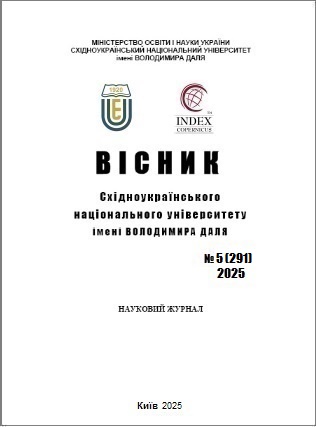Сalibration method for test liquids for measuring surface energy by the Оwens-Wendt method
DOI:
https://doi.org/10.33216/1998-7927-2025-291-5-88-94Keywords:
polymer, wetting, wetting angle, calibrationAbstract
This scientific paper presents a comprehensive study of the surface characteristics of mixed liquids using a graphical analysis method developed by Owens and Wendt, which allows the total surface tension to be quantitatively divided into two main components: the dispersive and polar components. In order to improve the accuracy and reliability of the calculation results, the paper proposes the use of a number of polymer materials with known surface properties as calibration substrates for determining contact wetting angles. This made it possible to extend the application of the Owens–Wendt graphical approach to the analysis of complex multicomponent liquid systems, in particular those containing both nonpolar organic solvents and substances with pronounced polar or hydrogen bonds.
The study investigated the wetting of various mixtures of polymer surfaces based on polyethylene, polypropylene, Teflon, polystyrene and other polymers with different ratios of dispersed and polar components of surface tension. The experimental values of the contact angles obtained made it possible to construct approximate straight lines in the Owens–Wendt method coordinates for each mixture and each surface. This made it possible to calculate the individual components of surface tension for the studied liquid systems with a high degree of accuracy. The influence of the composition of mixtures on the change in the values of polar and dispersive interactions at the phase boundary was analysed.
In addition, it was demonstrated that an increase in the number of polymer calibration surfaces leads to a reduction in errors in linear approximation and allows avoiding systematic deviations in the determination of surface energy parameters. The results obtained are consistent with the literature data, which confirms the reliability of the developed approach. The presented methodology can be effectively applied to evaluate the surface properties of new composite materials, liquid preparations and functional fluids in various fields of chemistry, biotechnology and materials science. Thus, the study not only expands the possibilities of applying the classical Owens–Wendt approach, but also offers a new tool for a more accurate and convenient assessment of intermolecular interactions in systems with a liquid phase. The presented scientific work carries out a comprehensive study of the surface characteristics of mixed liquids using the graphical analysis method developed by Owens and Wendt, which allows the total surface tension to be quantitatively divided into two main components — the dispersive (London) and polar (dipole-dipole) components. In order to improve the accuracy and reliability of the calculation results, the paper proposes the use of a number of polymer materials with known surface properties as calibration substrates for determining contact wetting angles. This made it possible to extend the application of the Owens–Wendt graphical approach to the analysis of complex multicomponent liquid systems, in particular those containing both nonpolar organic solvents and substances with pronounced polar or hydrogen bonds.
The study investigated the wetting of various mixtures of polymer surfaces based on polyethylene, polypropylene, Teflon, polystyrene and other polymers with different ratios of dispersed and polar components of surface tension. The experimental values of the contact angles obtained made it possible to construct approximate straight lines in the Owens–Wendt method coordinates for each mixture and each surface. This made it possible to calculate the individual components of surface tension for the studied liquid systems with a high degree of accuracy. The influence of the composition of mixtures on the change in the values of polar and dispersive interactions at the phase boundary was analysed.
In addition, it was demonstrated that an increase in the number of polymer calibration surfaces leads to a reduction in errors in linear approximation and allows avoiding systematic deviations in the determination of surface energy parameters. The results obtained are consistent with the literature data, which confirms the reliability of the developed approach. The presented methodology can be effectively applied to evaluate the surface properties of new composite materials, liquid preparations and functional fluids in various fields of chemistry, biotechnology and materials science. Thus, the study not only expands the possibilities of applying the classical Owens–Wendt approach, but also offers a new tool for a more accurate and convenient assessment of intermolecular interactions in systems with a liquid phase.
References
1. Rodney Marcelo Do Nascimento, Joao Elias F.S. Rodrigues. A novel framework for evaluating the surface free energy and depinning forces of invasive medical tubes. Chemical Engineering Science. 2025. Т. 312.
2. You Chen, Zhibin Jiao. Elsevier Chemical Engineering Journal Volume 506, 15 January 2025, 160041 Chemical Engineering Journal Bio-inspired anti-glare and self-cleaning surface for optical/tissue residue pollution treatment of medical device surface. Chemical Engineering Journal. 2025. Т. 506 : 160041. URL: https://doi.org//10.1016/j.cej.2025.160041.
3. P. Dimitrakellis, E. Gogolides. Atmospheric plasma etching of polymers: A palette of applications in cleaning/ashing, pattern formation, nanotexturing and superhydrophobic surface fabrication. Microelectronic Engineering. 2025. Т. 194. С. 109–115.
4. Alexane Vital, Marylène Vayer. Polymer masks for structured surface and plasma etching. Applied Surface Science. 2015. Т. 332. С. 237–246.
5. Anatoly E. C. Adhesion and Energy Characteristics of Rigid-Chain Polymer Surface: Polyamidoimides. Polymer Structure and Property III. 2020. Т. 2956.
6. S. Siboni. The solid surface free energy calculation: II. The limits of the Zisman and of the “equation-of-state” approaches. Journal of Colloid and Interface Science. 2004. Т. 271. С. 454–472.
7. Anna R. Analysis for determining surface free energy uncertainty by the Owen–Wendt method. International Journal of Adhesion and Adhesives. 2009. Т. 29 : 4. С. 451–457.
8. Carel J. Van Oss. Interfacial Forces in Aqueous Media. Boca Raton : 2nd Edition, 2006. 456 с.
9. Особенности оценки смачивания полимерных поверхностей / Миронюк та ін. Східно-Європейський журнал передових технологій. 2014. Т. 67. С. 23–26.

